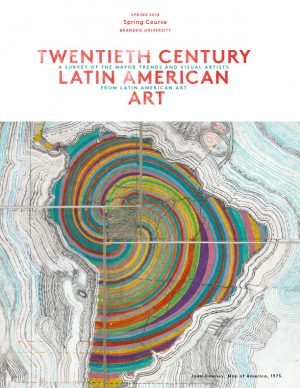Twentieth Century Latin American Art / Spring 2018
As part of the Survey of Latin American Art program, from 1870 to part, taught at the United States Brandeis University on summer 2018, this course surveys the art of Latin America since the late 1800s —when the first solid proposals for “native expression” of the continent started to be developed—until the early 2000s, when the first Latin American artist considered to be a “global master,” Mexican Gabriel Orozco, emerges in the international contemporary scene. Thus, the course will familiarize students with the work of leading Latin American artists active in their native countries and abroad, in addition to major developments such as the rise of abstraction, conceptualism, and postmodernism. We will also explore significant issues that have shaped the production and reception of the region’s art, considering, for example, strategies used by Latin American artists to resist or reinterpret artistic discourses, negotiating local and international trends.

